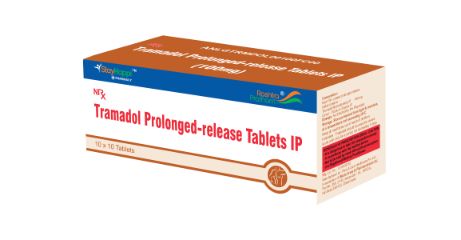Uncategorized
Is 100mg of Tramadol a Lot? Understanding Dosage and Safety
Introduction
Is 100mg of Tramadol a Lot, Tramadol is a commonly prescribed medication for managing moderate to severe pain. If you’ve been prescribed 100mg of tramadol, you may be wondering whether this is a high dose and what to expect in terms of effectiveness and safety. This blog post explores the question, “Is 100mg of tramadol a lot?” and provides key information about tramadol dosage, safety, and usage.
What is Tramadol?
Tramadol is a synthetic opioid pain reliever that works by altering how the brain perceives pain. Unlike stronger opioids, tramadol also affects the reuptake of serotonin and norepinephrine, making it a dual-action painkiller. It is used to treat conditions like post-surgical pain, injury-related pain, or chronic pain conditions such as arthritis.
Tramadol comes in various strengths and formulations, including immediate-release (IR) and extended-release (ER). The dosage prescribed depends on the severity of pain, individual patient needs, and how your body responds to the medication.
Is 100mg of Tramadol a Lot?
The answer to whether 100mg of tramadol is “a lot” depends on several factors, including:
- Your Tolerance to Opioids: If you’ve never taken opioids or are new to tramadol, 100mg may be considered a relatively high starting dose. For most people, tramadol treatment typically starts at 50mg, taken once or twice daily, depending on pain levels.
- Immediate-Release vs. Extended-Release: If you are taking the immediate-release form of tramadol, 100mg can provide more intense pain relief for a shorter duration, typically lasting 4-6 hours. In contrast, the extended-release version delivers a steady dose over 24 hours, making it suitable for chronic pain.
- Maximum Daily Dose: For most adults, the maximum recommended daily dose of tramadol is 400mg in divided doses, meaning 100mg would still be within the safe range, but it could be on the higher side for people new to the drug.
In short, 100mg of tramadol may be appropriate for some patients, especially those who have been taking the medication for a while or who require higher doses for adequate pain control. However, for new users or those with lower pain tolerance, this could be considered a higher dose.
Potential Side Effects of 100mg of Tramadol
As with any opioid medication, taking tramadol at higher doses may increase the risk of side effects. Common side effects of tramadol 100mg include:
- Drowsiness
- Dizziness
- Nausea or vomiting
- Constipation
- Headaches
In some cases, more severe side effects can occur, particularly if tramadol is taken in larger doses or combined with other medications. These may include:
- Seizures
- Respiratory depression (slowed or difficult breathing)
- Confusion or disorientation
- Serotonin syndrome (if taken with certain antidepressants)
If you experience severe side effects or allergic reactions, seek medical attention immediately.
Can You Develop a Tolerance to 100mg of Tramadol?
Over time, your body may develop a tolerance to tramadol, meaning the same dosage might become less effective in managing pain. If this happens, some patients may need to adjust their dose, but increasing your dose should always be done under medical supervision.
Misuse or overuse of tramadol can lead to dependence, tolerance, or even addiction. It’s crucial to follow your doctor’s dosage instructions carefully and not to increase the dose without consulting them.
How to Safely Use 100mg of Tramadol
To ensure you’re using tramadol safely and effectively, follow these guidelines:
- Take as Prescribed: Always stick to the dosage prescribed by your doctor. Don’t take more than the recommended amount, as it could lead to dangerous side effects.
- Avoid Alcohol: Alcohol can increase the risk of side effects like dizziness, drowsiness, and respiratory issues. It’s best to avoid alcohol when taking tramadol.
- Be Aware of Drug Interactions: Tramadol can interact with other medications, especially antidepressants, sedatives, or other opioids. Make sure your doctor knows about all the medications and supplements you are taking.
- Monitor Your Response: If you find that 100mg of tramadol isn’t controlling your pain effectively, or if it’s causing too many side effects, consult your healthcare provider. They may adjust your dose or switch you to a different pain medication.
- Don’t Stop Abruptly: If you’ve been on tramadol for an extended period, don’t stop taking it abruptly, as it can lead to withdrawal symptoms. Work with your doctor to gradually taper off the medication if needed.
When to Contact Your Doctor
While tramadol can be highly effective for pain relief, it’s important to contact your doctor if you:
- Experience side effects that are severe or worsen over time.
- Feel that 100mg is not managing your pain effectively.
- Have concerns about dependence or withdrawal.
- Are taking other medications that may interact with tramadol.
Your healthcare provider can help you find the right dosage and ensure you’re using tramadol safely.
Conclusion
Is 100mg of tramadol a lot? It depends on the individual, their pain levels, and their previous opioid experience. For some, 100mg might be a standard dose to manage pain effectively, while for others, especially those new to the medication, it could be on the higher side.
Always follow your doctor’s instructions when taking tramadol and stay aware of potential side effects and drug interactions. By using tramadol responsibly, you can effectively manage your pain while minimizing the risks associated with higher doses.

